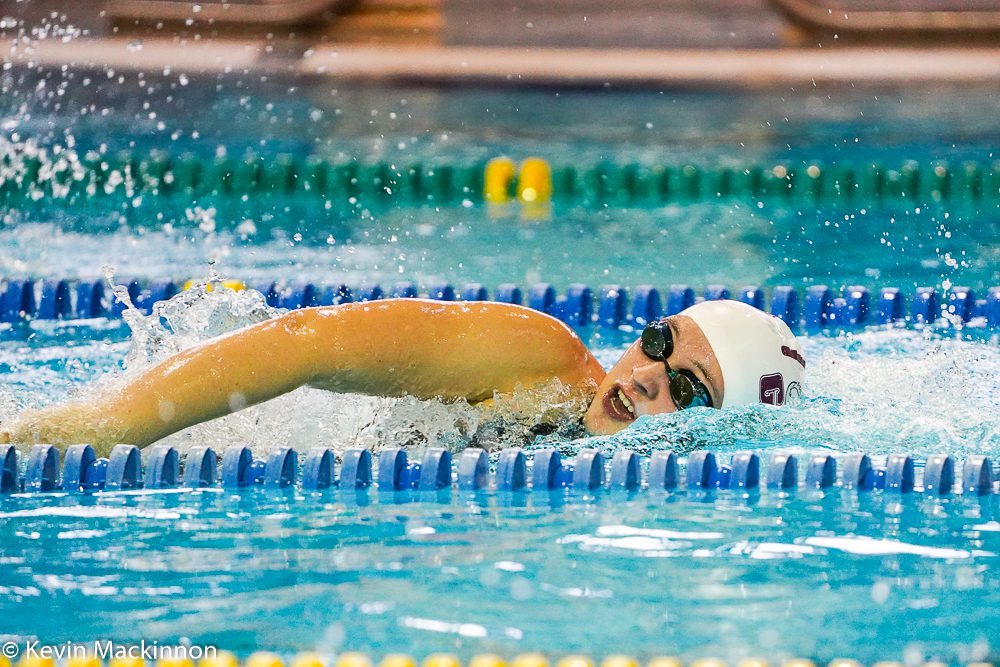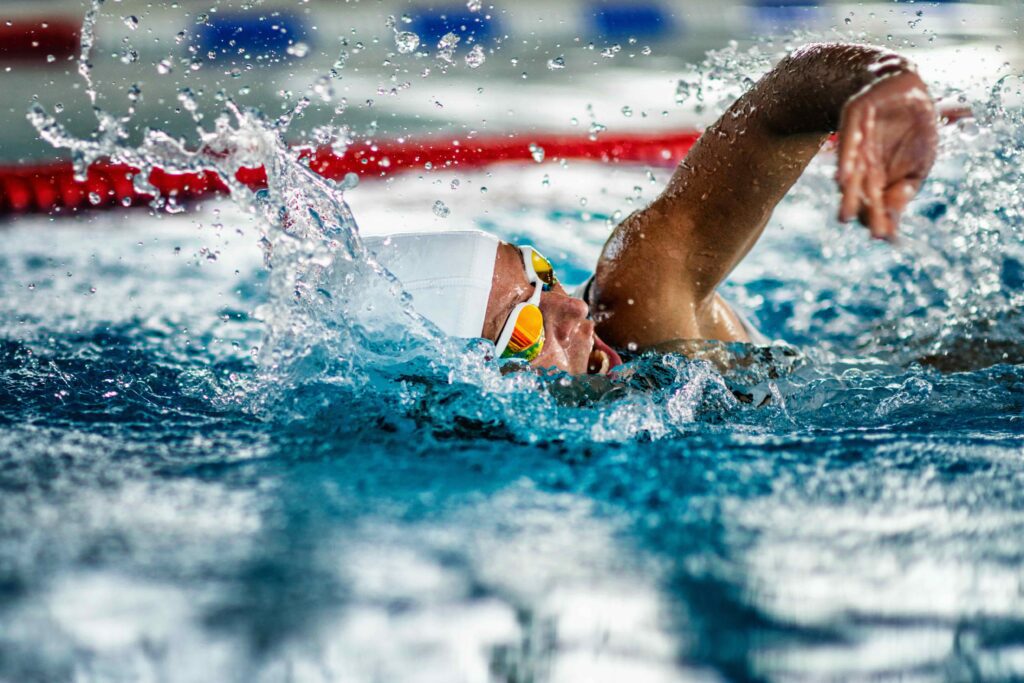How much swimming does a triathlete need to do?
It might be less than you think
 Photo by:
Kevin Mackinnon
Photo by:
Kevin Mackinnon
In all the years I’ve been coaching triathletes (over 35 at this point), I very rarely have to try and convince an athlete I’m working with to swim less. Many people gravitate to the sport from a running or cycling background, and aren’t as comfortable in the water. Add to that the fact that the swim is the shortest of the three legs of a triathlon, and it’s easy to justify spending as little time in the water as possible.
While I get it, I’ve also seen that approach backfire on more than a few occasions. There is nothing worse than being at the swim finish at an Ironman and seeing athletes miss the cut off.
There’s no simple answer to the question of how much a triathlete should swim because there are so many different variables. If there’s a chance you might not make the cut off time, you’ll definitely want to put some extra time in the pool to try and improve your stroke, speed and fitness. If you compete in draft-legal events, you’ll want to spend lots of time honing your swim skills – where you are heading into T1 will make or break your race.
If you come from a swim background and continue to be a competent swimmer, you might need to spend less time in the water – especially if your goal is just to finish the race. If your swim leg is “good enough” to get you to the finish comfortably, and you’re time strapped every week, less time in the water might make sense, too. You can hone your fitness on the more time efficient bike and run legs, and hit the pool enough to ensure you can get things done on race day.

Three sports
All of that said, if performance is your ultimate goal, and swimming is your weakness, you might want to give up some bike and run time to work on the swim leg. All too often I see athletes who are incredible runners put much of their training energy into that leg. As I pointed out in this story on improving your cycling, it wasn’t until I improved on the bike that I started to get my best results as a triathlete, despite the fact that I routinely posted the fastest runs at any race I entered. The top triathletes are solid in all three sports – gone are the days when you can have one weaker leg and still finish atop the podium. While that’s now a given in the pro ranks, it’s becoming a truism for the top age group athletes, too.
Sessions per week
The general rule of thumb is that swimming once a week will basically provide enough muscle memory to ensure you’ll get through the race. (Once again – that’s as long as you’re a competent swimmer to start with.)
Swimming twice a week is likely enough to maintain any swim fitness you’ve developed.
Most coaches, including myself, will do their best to get you in the water three times a week, which is usually enough (combined with your swim and bike training) to both improve fitness and allow for some technical improvements.
Getting into the water four times a week (0r more) is optimal for those who need to improve their swim stroke and fitness, compete in draft-legal events, or at the highest level of non-drafting events. (Read, elite or pro!)
Volume
As Clint Lien points out in the excellent story above, “The single biggest correlation between speed and a training variable is volume. The best way to increase volume is to increase frequency. Swimming five times a week for one hour is better than swimming three times a week for an hour and forty minutes.”
I often find that I am better to cajole my beginner swimmers to the pool four times a week for a 1,000 to 1,500 m session than have them hit three 1,500 to 2,000 m swims a week – especially if any of those sessions are drill and technique focussed. I often find that after 1,000 m of drill work their shoulders are so tired they struggle to hold their stroke together.
Regardless of the distance they’re racing, most of the athletes I coach do 45 to 60 min sessions in the pool. Even my wife, the 2022 Kona age group champion, rarely swims longer than 2,500 m in a session. I struggle to keep her away from the pool (she’s one of the exceptions), so she’ll routinely swim four times a week, including one longer session of 3,000 to 3,500 m. The rest are shorter.
The key to all that, though, is to ensure that you’re getting some decent quality. Intervals are the name of the game in the pool. You’re not going to get a lot out of a 45 min straight swim three times a week.
Consistency
It’s amazing the results I’ve seen from athletes who have consistently got to the pool three times a week for a long period of time. For some time-strapped athletes I coach, some of those swims are quick, 1,000 m efforts – a trick I learned during my last two years of racing as a pro while I was doing my journalism degree. Something was better than nothing, I quickly learned, especially when I was both time-strapped and tired.
Figuring out how much you should swim is very much dependent on your ability and goals. Once you’ve got that figured out, you should be able to dial in a decent schedule that will allow you to get the best bang for your swimming buck.
